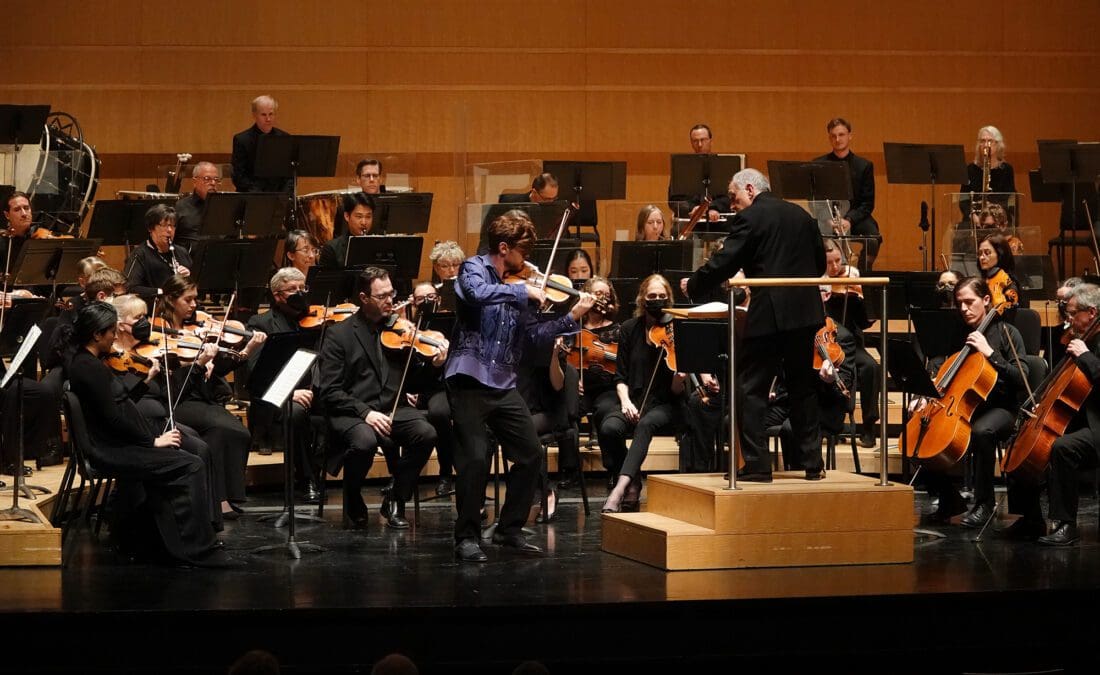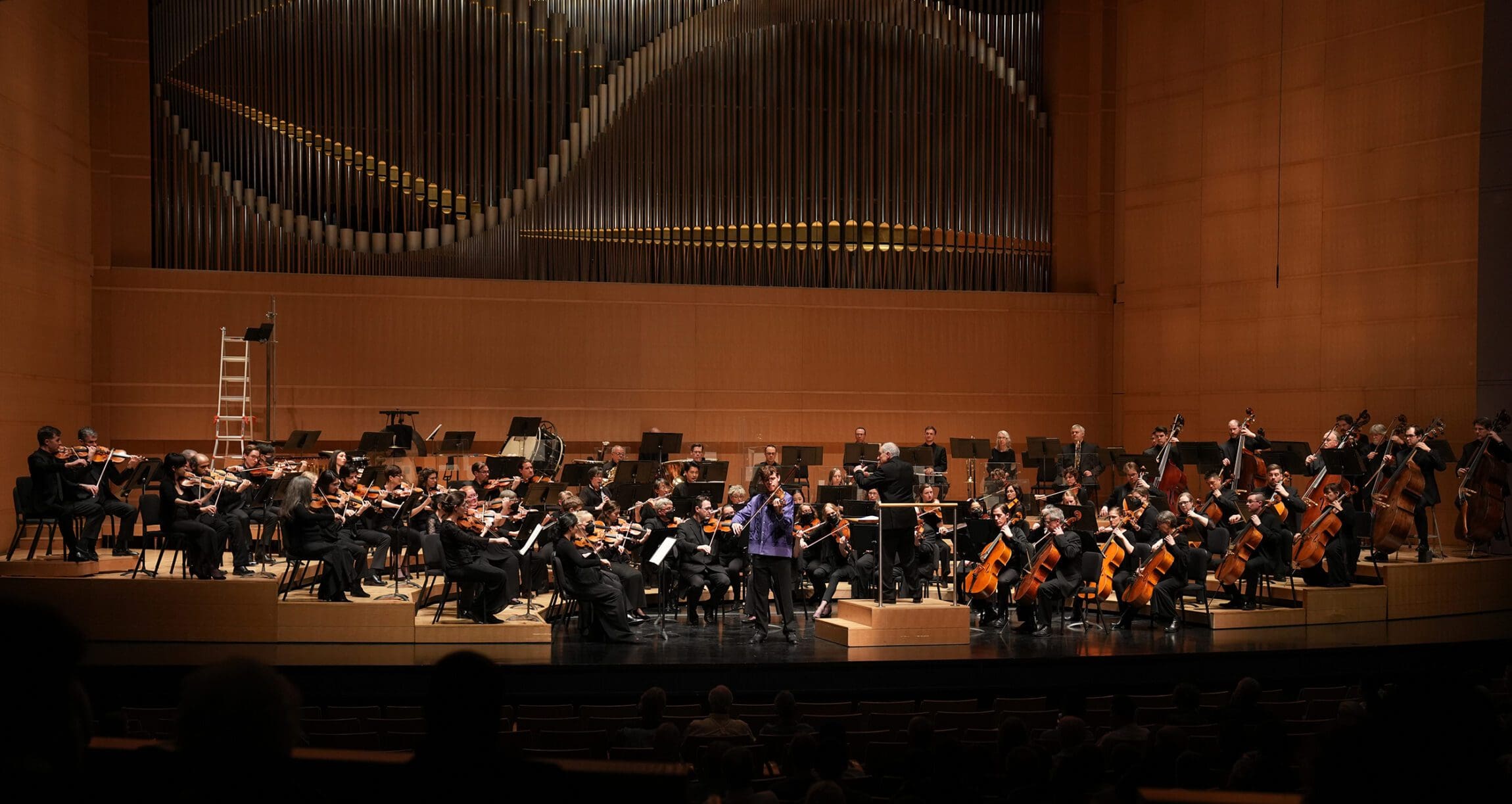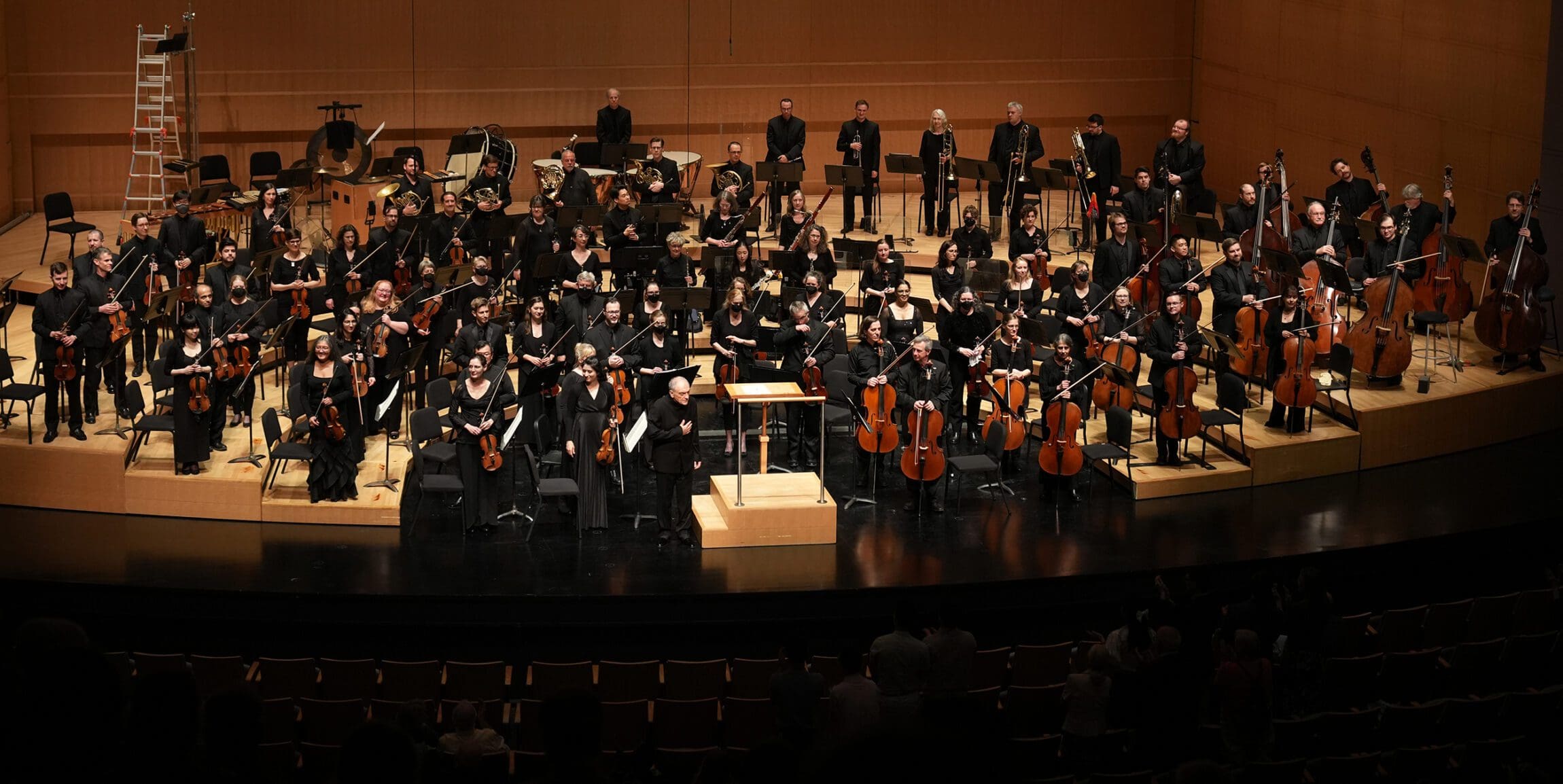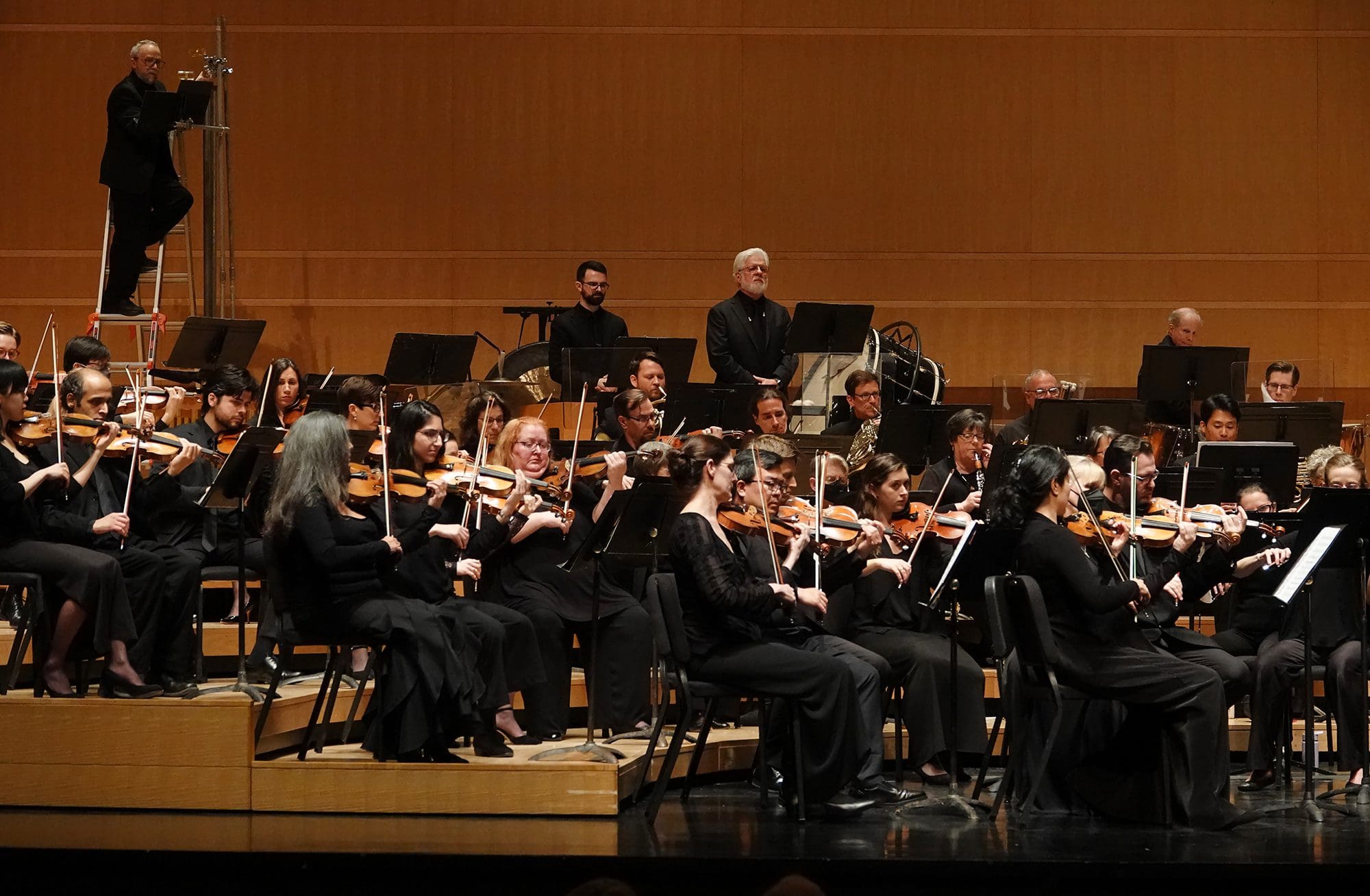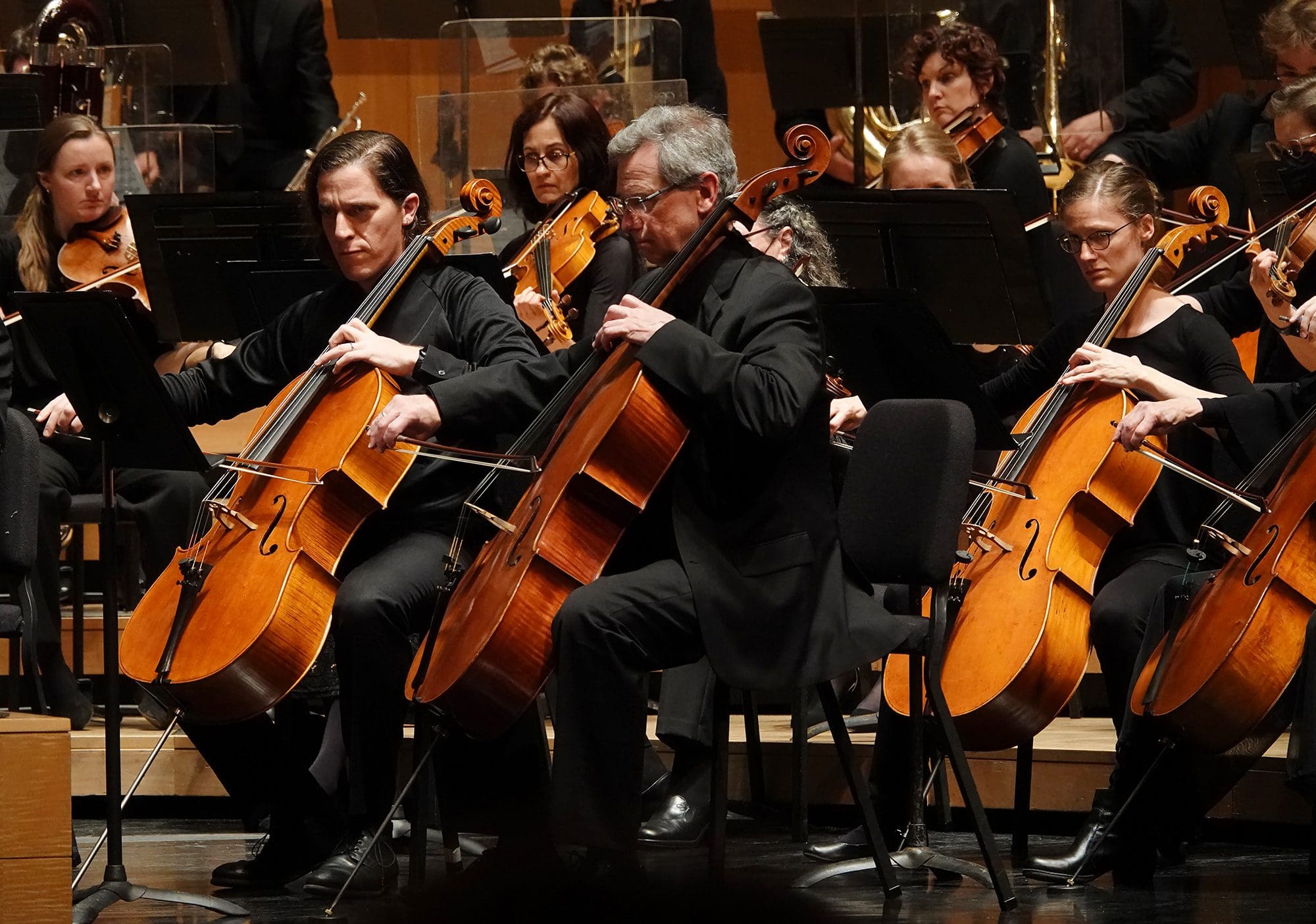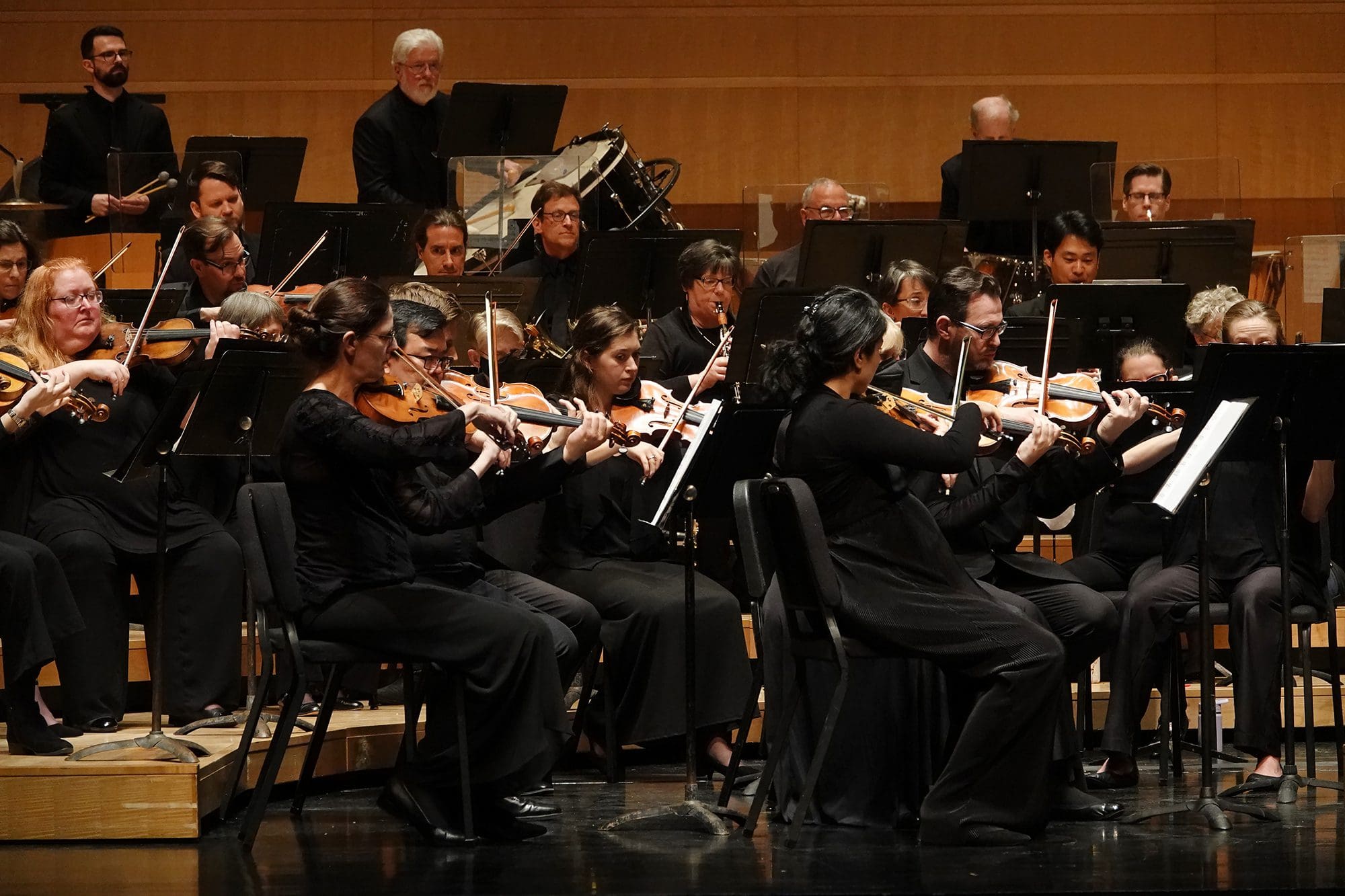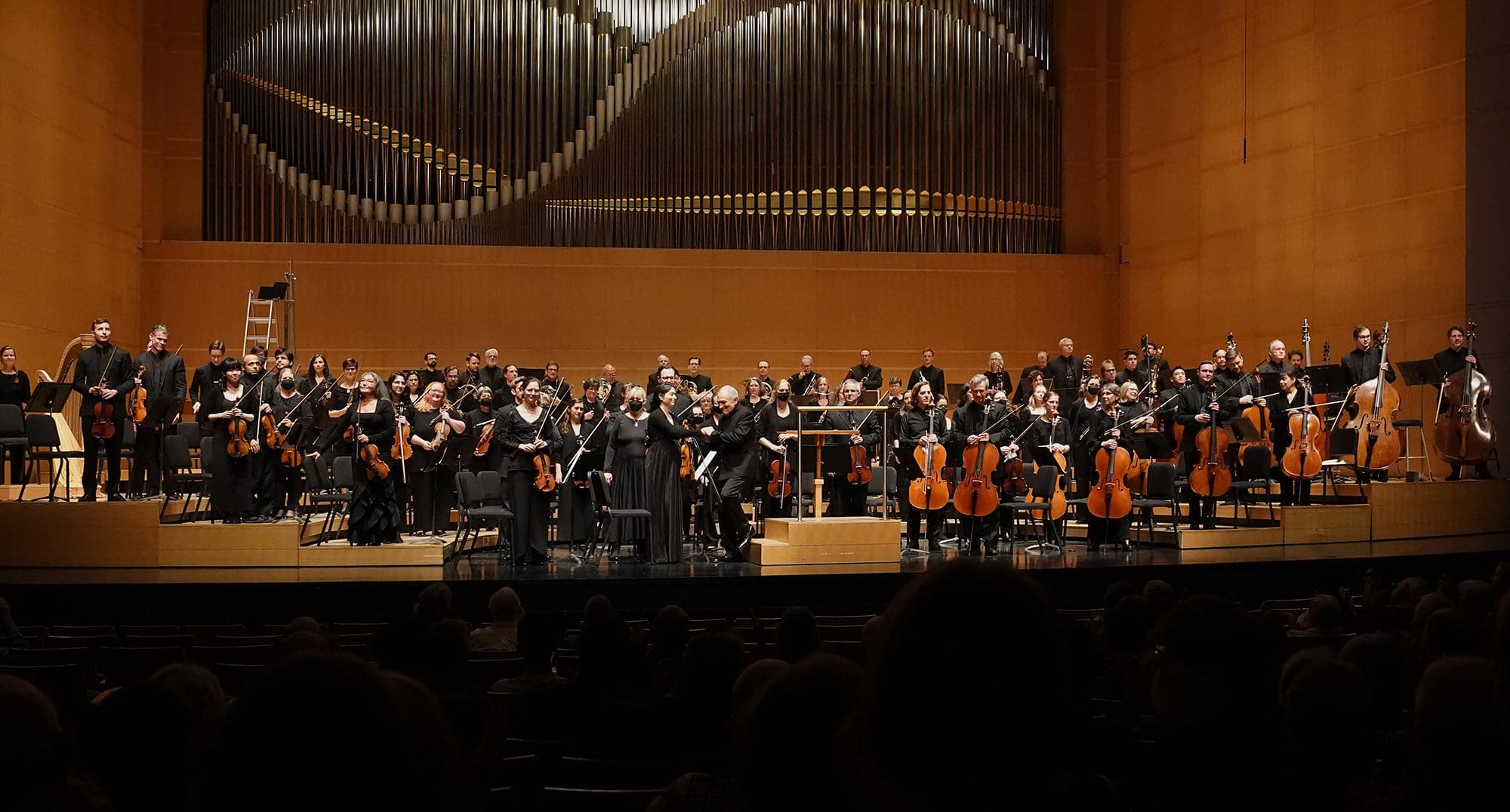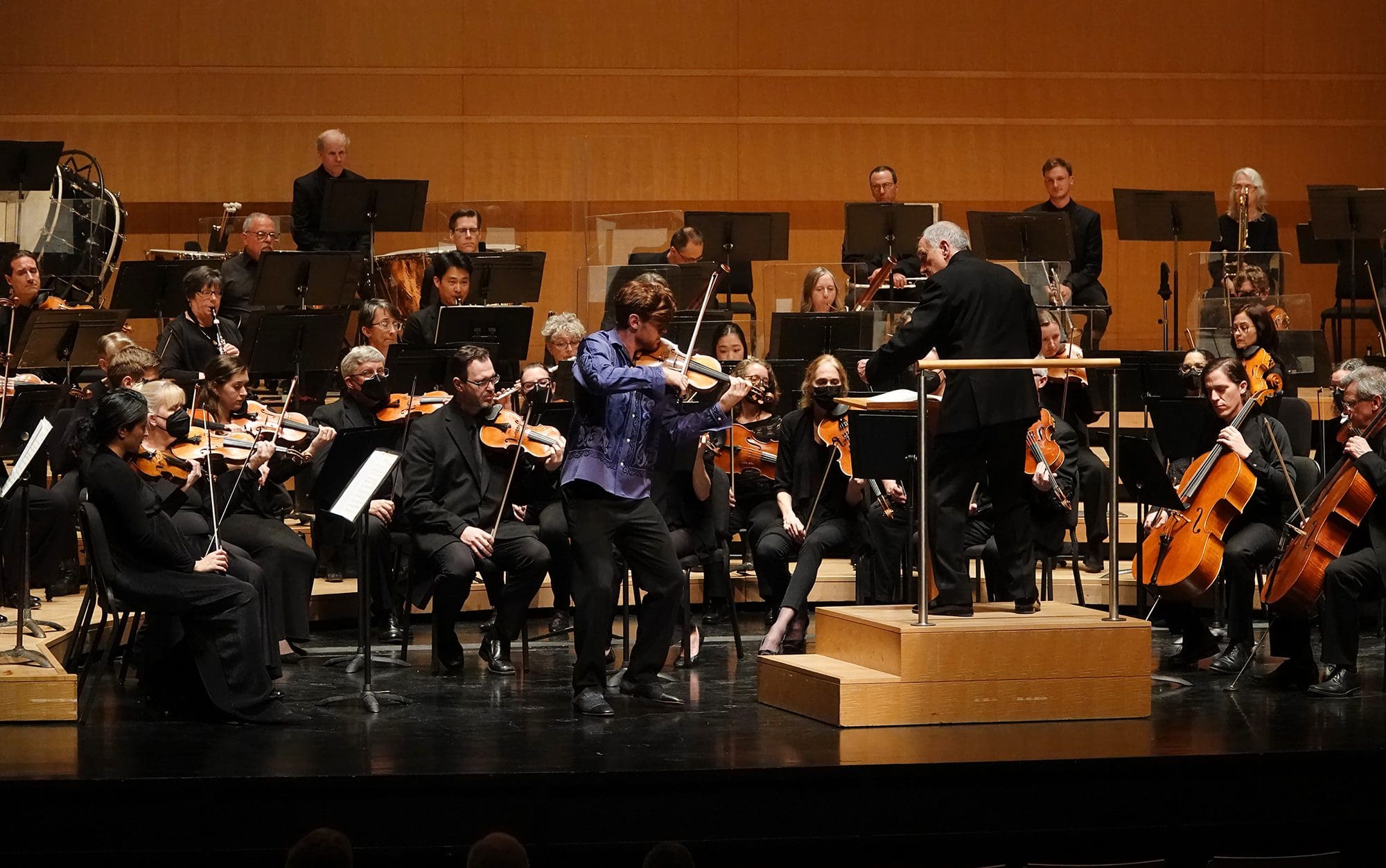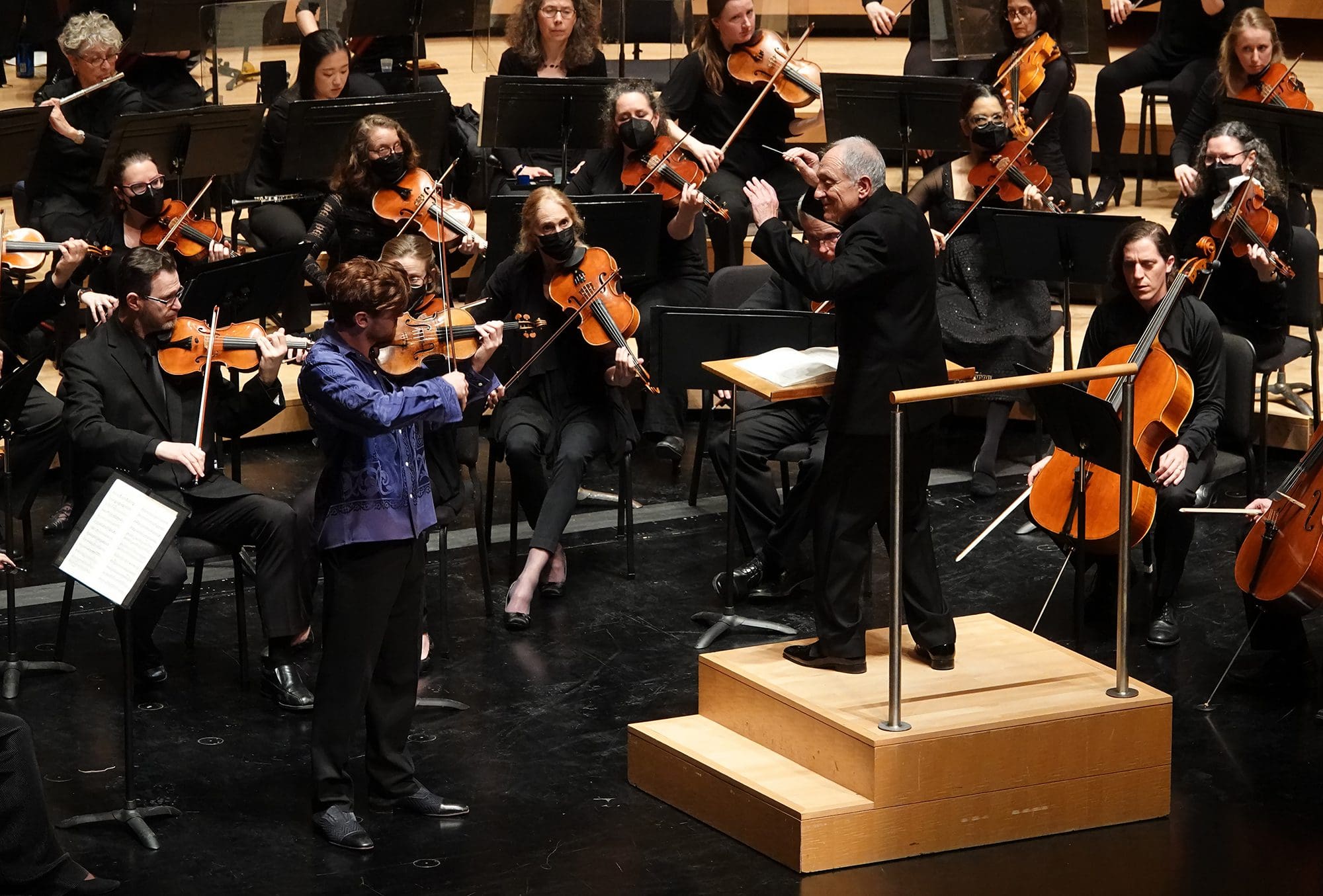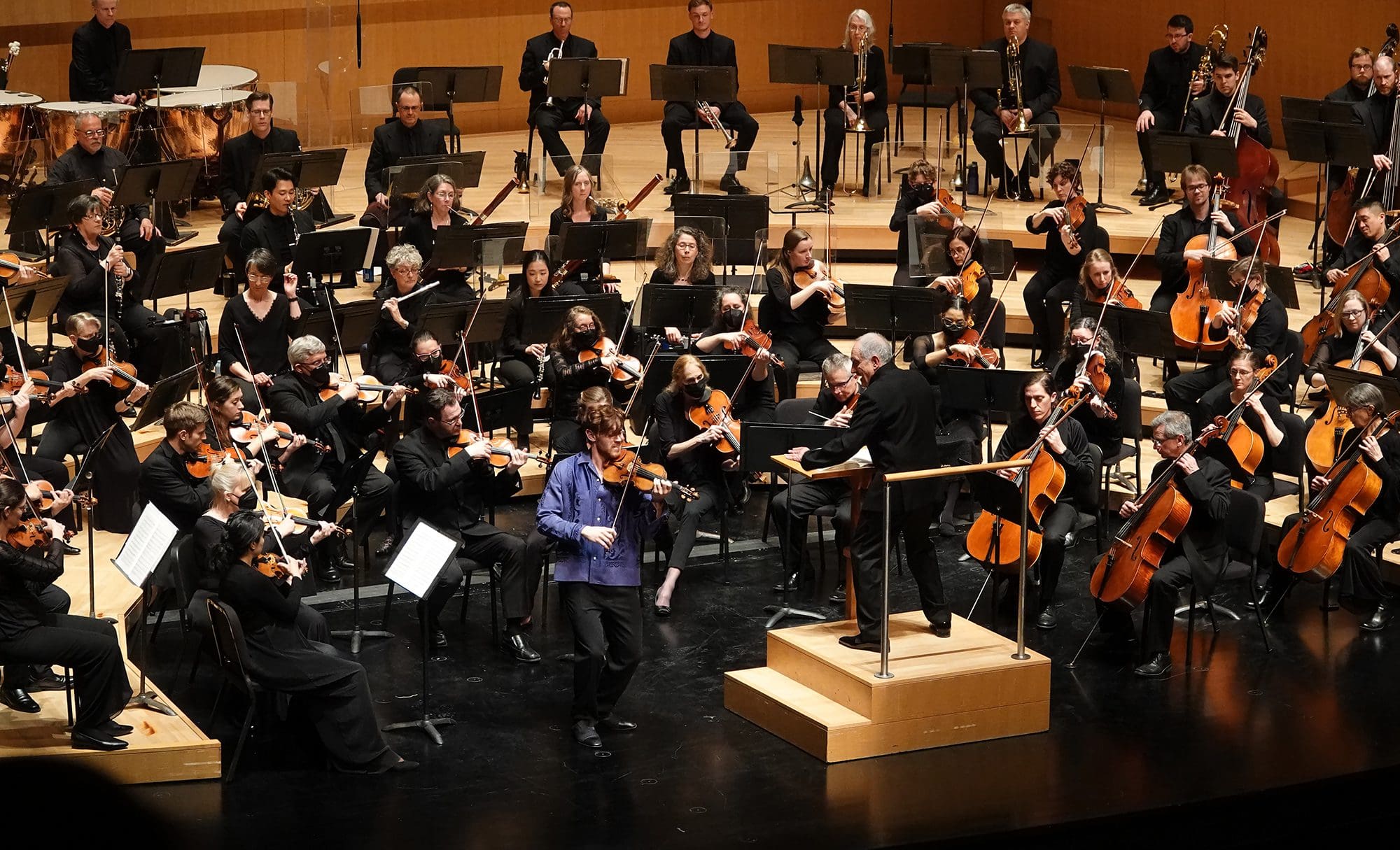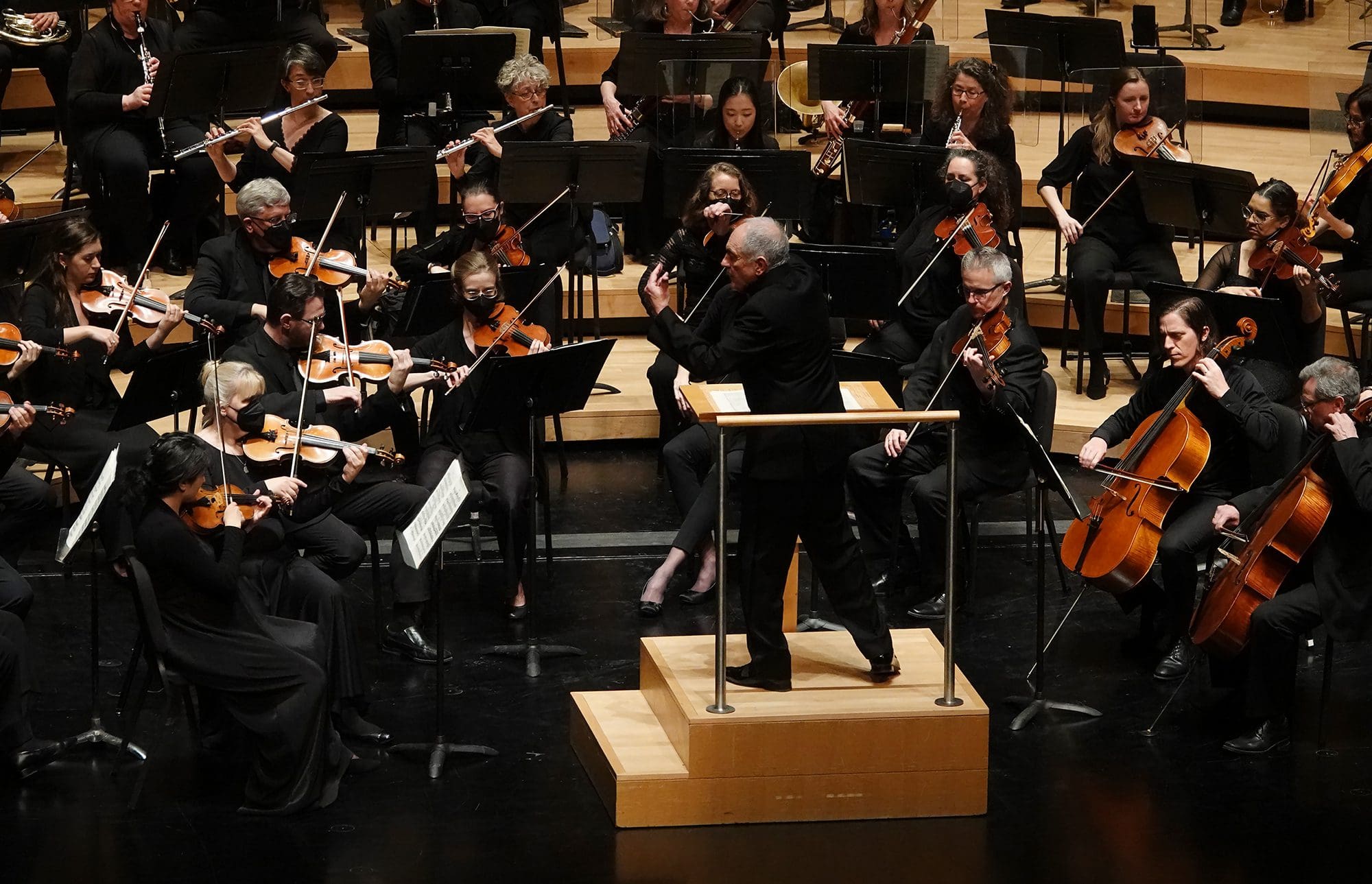The Madison Symphony Orchestra was thrilled to welcome Blake Pouliot to Overture Hall for our April 14, 15 and 16 concerts, Dazzling Violin & Spring. Read reviews from the concert weekend, hear what the audience had to say, and view pictures below!
Matt Ambrosio / The Cap Times: “Madison Symphony welcomes spring with Saint-Saëns”
Is there any better way to ring in spring than with music? I think not, especially after attending the Madison Symphony Orchestra’s Friday evening concert. The concert’s arc, opening with a piece known for its musical rendering of a storm and ending with a warm pastoral symphony, perfectly represented April in Madison.
After hosting Blake Pouliot for last season’s gorgeous Mendelssohn concerto, the MSO welcomed him back for Camille Saint-Saëns’ Violin Concerto no. 3. Written originally for violinist Pablo de Sarasate, a friend of Saint-Saëns for nearly two decades before he completed the piece, the violin concerto is the product of a composer who knew well the capabilities and limits of the instrument — and put both on display.
The end of the second movement, for example, calls for a quick array of harmonics, which are produced by lightly touching very precise spots on the violin strings while bowing. Harmonics often have a soft, ethereal timbre, but Pouliot achieved a striking dynamic and vibrant tone with these most delicate notes.
Equally as impressive was Pouliot’s gymnastic handling of the many quick bariolage and triple stops throughout the work. He is truly a fantastic technical player with a singular style and a fresh take on the standard repertoire.
Though subdued compared to his lively playing in the finale movement, the soloist’s very first phrases at the start of the piece were most impressive. Initially, Pouliot’s tone sounded tactfully removed and held back, creating a dramatic contrast to the broader and more spirited tone that followed. His thoughtful decisions regarding tone and his expert shaping of phrases make Pouliot a distinguished performer.
Even beyond his technique, Pouliot was truly a delight to watch. When playing, he embodied the music entirely, his body moving from states of elasticity to rigidity as he interpreted the music with his whole self. And when not playing, he softly sang along and gestured with the rest of the orchestra.
No doubt sensing the pure adoration from the crowd, Pouliot delighted everyone with two encores. Before playing, he reflected aloud on the last time he played in Overture Hall — March 8, 2020 — and shared that Madison will always be special to him, that it was “nice to come together again and move forward.”
He began with the “Gavotte en Rondeau” movement from J.S. Bach’s Violin Partita no. 3 and gave this Baroque gem a modern interpretation. Pouliot imbued each episode with a distinct characteristic quality and provided ample space between phrases, charging them with rhetorical energy. And to close the work, he gave a playful yet tasteful elaboration to the final ritornello.
Unexpectedly, Pouliot followed Bach’s “Gavotte” with the theme from Heinrich Wilhelm Ernst’s “The Last Rose of the Summer,” the encore from his pre-pandemic performance. From the very first chord, Pouliot held my attention with a sweet and penetrating melody. I hung on every subtle stroke of his bow.
While the headlining Pouliot was undoubtedly the highlight of Friday’s concert, the opening piece, Benjamin Britten’s “Four Sea Interludes” from his opera Peter Grimes, was an absolute treat, and the MSO sounded fantastic. These interludes come from four different moments of the opera, and, if only at a remove, provide a general sense of the plot: a fisherman, whom the townspeople suspect for the death of his two apprentices, is forced out of town, sails off, and likely perishes (read further details in Michael Allsen’s program notes).
The notion of the sea was apparent at the very start of the work. The first movement introduced orchestral swells, first in the high strings and then in the brass, meant to depict swelling waves. These swells returned in the third interlude, taken up by the full MSO with sprinklings of notes from the harp and woodwinds.
In the final interlude, which depicts a tempest, the swells became aggressive and violent, and led to a raucous close. The MSO’s heightened togetherness throughout the work made the depiction of the sea, particularly the swelling waves, especially compelling.
Hear what the audience had to say…
“The lecture prior to the performance was amazing. We started attending them regularly this year; Randy Swiggum is our favorite. My favorite piece was Britten; my husband’s was the Saint-Saëns because of the soloist’s virtuosity.”
“The music was exceptionally beautiful. Blake Pouliot performed beautifully. The pre-show talk was helpful and insightful.”
“The musicianship and the playing of the orchestra was outstanding. The reading of the Britten was given an exceptionally atmospheric quality.”
“I loved the first half. The Britten piece was new to me and I thought it was fantastic. It goes without saying that Blake Pouliot was phenomenal.”
“The Saint-Seans No. 3. Pouliot was energetic and joyful, and his two encores were awesome as well. Please bring him back!”
“Britten was colorful and entertaining, Pouliot was excellent and very engaging, Brahms is an old friend and always a pleasure to hear.”

